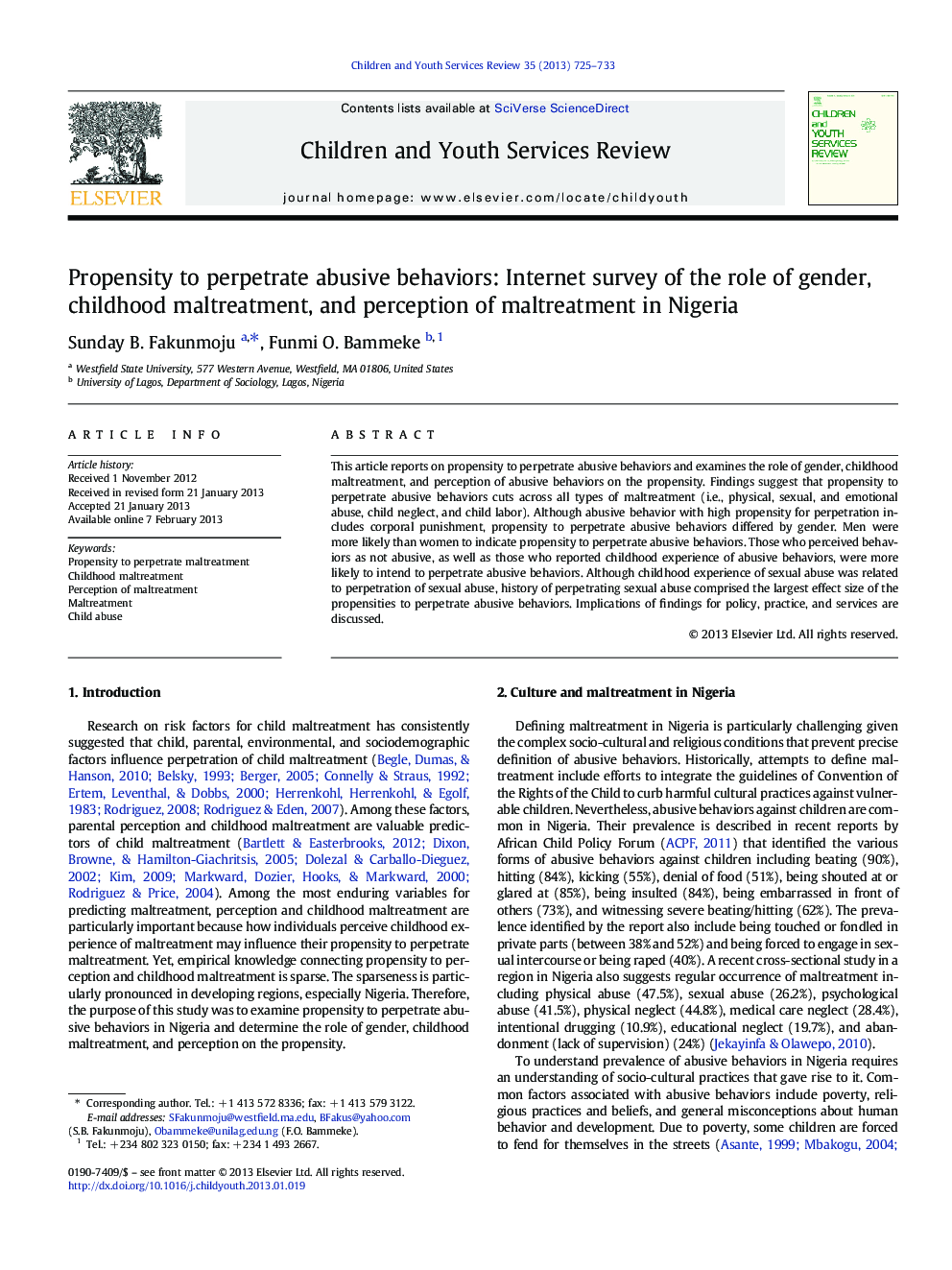| کد مقاله | کد نشریه | سال انتشار | مقاله انگلیسی | نسخه تمام متن |
|---|---|---|---|---|
| 346096 | 617800 | 2013 | 9 صفحه PDF | دانلود رایگان |

This article reports on propensity to perpetrate abusive behaviors and examines the role of gender, childhood maltreatment, and perception of abusive behaviors on the propensity. Findings suggest that propensity to perpetrate abusive behaviors cuts across all types of maltreatment (i.e., physical, sexual, and emotional abuse, child neglect, and child labor). Although abusive behavior with high propensity for perpetration includes corporal punishment, propensity to perpetrate abusive behaviors differed by gender. Men were more likely than women to indicate propensity to perpetrate abusive behaviors. Those who perceived behaviors as not abusive, as well as those who reported childhood experience of abusive behaviors, were more likely to intend to perpetrate abusive behaviors. Although childhood experience of sexual abuse was related to perpetration of sexual abuse, history of perpetrating sexual abuse comprised the largest effect size of the propensities to perpetrate abusive behaviors. Implications of findings for policy, practice, and services are discussed.
► Propensity to perpetrate abusive behaviors against children was examined.
► Corporal punishment comprised the most likely abusive behavior to be perpetrated.
► Propensity to perpetrate abusive behaviors differed by gender.
► Propensity was related to perception and childhood experience of abusive behaviors.
► Effect size for propensities was largest for history of perpetrating sexual abuse.
Journal: Children and Youth Services Review - Volume 35, Issue 4, April 2013, Pages 725–733